Share
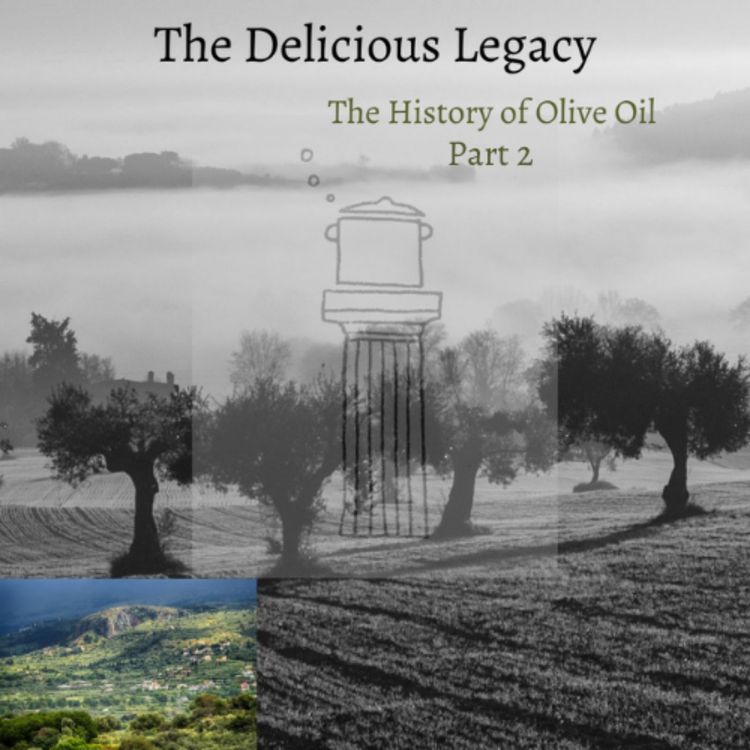
The Delicious Legacy
The History of Olive Oil Pt2
"If you deconstruct Greece, you will in the end see an olive tree, a grape vine and a boat remain. That is with as much you reconstruct her." -Odyseas Elytis Greece's Nobel Prize winning poet.
Olive Oil tasting:
Since extra virgin olive oil is simply pressed fruit juice without additives, the factors influencing its quality and taste include the varieties of olives used, the terroir and the countless decisions, production practices and the dedication of the producer. Olive oil tasters describe the positive attributes using the following terms:
• Fruity: Having pleasant spicy fruit flavours characteristic of fresh ripe or green olives. Ripe fruit yields oils that are milder, aromatic, buttery, and floral. Green fruit yields oils that are grassy, herbaceous, bitter, and pungent. Fruitiness also varies by the variety of olive.
• Bitter: Creating a mostly pleasant acrid flavour sensation on the tongue.
• Pungent: Creating a peppery sensation in the mouth and throat.
The traditional palate cleanser between olive oils, is water, plain or sparkling, and slices of Granny Smith apple.
You may notice the smell of fresh-cut grass, cinnamon, tropical fruits or other aromas of ripe or green olive fruit. This is a good time to point out that the word “fruity” in olive oil can refer to vegetable notes, i.e. green olive fruit, as well as to ripe fruit notes. So think of artichokes, grass and herbs as “fruit” when you taste olive oils!
Music by Pavlos Kapralos
Voiceover recorded at Richard Bignell's studio, Area18 in North Acton.
Enjoy!
Thom & The Delicious Legacy
Support the podcast on Ko-Fi and Patreon for ad-free episodes!
More episodes
View all episodes
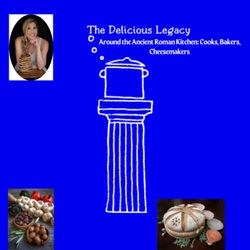
17. RE-AIR: Ancient Rome's Bakers, Cooks and Kitchens w/ Extra Content!
53:24||Season 7, Ep. 17Hello!On this classic episode from the archives of The Delicious Legacy I decided to include some ten minute of extra content from my interview with Farrell and I have remastered the audio as it was a bit dodgy the last time round. Hope it's more pleasant and easier to listen now!I'm very excited about this episode! Farrell Monaco is a culinary & experimental archaeologist, and bread-baking addict! Especially of the ancient Greco-Roman variety...So what better person to chat about the ancient cuisine? And it's a very thought-provoking and thoughtful. Who were the people (and the animals!) who did the hard work?Currently in California -where she was when we spoke online- but mostly researching in Pompeii, Herculaneum and Ostia about ancient Greco-Roman breadways.More info on bread from Pompeii by Farrell Monaco:https://www.bbc.com/travel/article/20230629-adoreum-the-newly-discovered-flatbread-fresco-of-pompeiihttps://www.bbc.com/travel/article/20230406-arculata-the-bread-that-survived-pompeiiApuleius and The Golden Ass:https://en.wikipedia.org/wiki/The_Golden_AssEtruscan Tarquinian Tombs:https://tarquiniaturismo.com/tomb-of-the-triclinium/?lang=en Farrell's website and blog:https://tavolamediterranea.com/Music by Pavlos KapralosEnjoy!Thom & The Delicious Legacy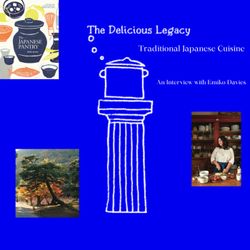
16. Traditional Japanese Cuisine
55:27||Season 7, Ep. 16Hello! New episode is out and I couldn’t be more excited about it!I've interviewed cookbook author Emiko Davies about her latest book "The Japanese Pantry" which came out in October this year.Emiko shares stories of her travels off the beaten track to meet the makers and pay homage to ancient traditions that have been around for centuries. Ingredients, dishes and recipes that are lost in the mists of time, and rare foods that might be lost forever!How do you make sake and rice vinegar? What are the sake lees and how do we use it? What is the rare delicacy of Yubeshi?We will explore the key ingredients of Japanese cuisine and on top of this, we will take a deep dive some unknown ingredients and dishes from all over the Japanese archipelago.You can follow the pensioner, mountain tea farmers who farmed at 1000 feet above sea level deep inside a forest, on Instagram at @nakaichamuraiEnjoy!Thom & The Delicious Legacy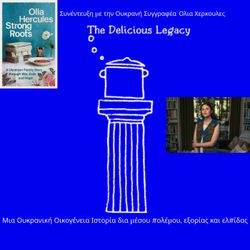
15. More Conversations In Greek - Συνέντευξη με την Ουκρανή Συγγραφέα 'Ολια Χερκουλες
55:30||Season 7, Ep. 15Hello!This episode is in Greek and it's the translation of the episode I recorded a couple of months ago with the food writer Olia Hercules about Ukrainian Food and Culture! The original episode can be found here: https://shows.acast.com/the-delicious-legacy/episodes/ukrainian-food-culture-with-olia-herculesΓεια σας! Το σημερινό επεισόδιο είναι μια συνέντευξη με την Ουκρανη συγγραφέα και σεφ Ολια Χερκουλες, που θα μας πει για την παραδοσιακή κουζίνα της Ουκρανίας, και τα φαγητά αλλά και τιε επιρροές από τους γείτονες λαούς μέσα στον χρόνο.Μιλήσαμε επί της ευκαιρίας του καινούργιου της βιβλίου, με τίτλο Strong Roots: "Μια Ουκρανική Οικογένεια Ιστορία δια μέσου πολέμου, εξορίας και ελπίδας"Μπορείτε να βρείτε αυτό αλλά και όλα τα βιβλία της εδώ: https://oliahercules.com/booksΕυχαριστώ για την ακρόαση. Μέχρι την επόμενη φορά, ας είμαστε δυνατοί γεροί και γεμάτη κουράγιο και ελπίδα.Η μουσική είναι του Παύλου ΚαπράλουΜε εκτίμηση,The Delicious LegacyThom Ntinas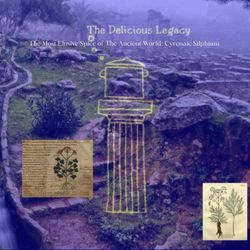
14. The Most Elusive Spice of The Ancient World: Cyrenaic Silphium
44:12||Season 7, Ep. 14Hello!A newly updated episode about Silphium! Or Asafoeitida? I was inspired by History Hit's newly released documentary with Dan Snow called Ancient Adventures: Libya where the team went to explore extraordinary Greek and Roman sites, centred around one of the greatest cities of the ancient world, Cyrene.So I thought it is time to talk again with more updates about silphium and with recipes and tasting by me here!What do we know of the ancient silphium? What do the authors say it tastes? And when was the last time that it was mentioned in texts?Plus the relationship with it's eastern cousin asafoetida and its use in Indian cuisine!Enjoy!With the voice over by Mark Knightand music by Pavlos KapralosLove,Thom & The Delicious Legacy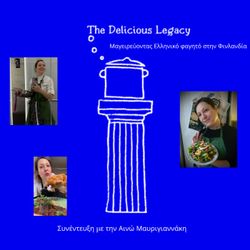
13. Conversations in Greek -Μαγειρεύοντας Ελληνικό φαγητό στην Φινλανδία
33:58||Season 7, Ep. 13Hello!This episode is in Greek language for Greek audience!It was released on Wednesday in English for the rest of you!Καλημερα!Το καινουργιο επεισοδιο, της εκπομπης μας, στα Ελληνικα για το κοινο στην Ελλαδα!Προβάλλουμε λοιπόν, δίνουμε για λίγο τα φώτα της δημοσιότητας στους Έλληνες Σεφ του εξωτερικού!Να δουμε την εμπειρια τους και την σχεση τους με το Ελληνικο φαγητο και πως εξελίσσεται εκτος Ελλαδος! Τι επιρροές φερνουν στα πιάτα και ποια η ανταποκριση των κατοικων της καθε χωρας στην Ελληνικη κουζινα?Ακουστε λοιπον το πρωτο επεισοδιο της σειρας μας στα Ελληνικα!ΘωμάςThe Delicious Legacy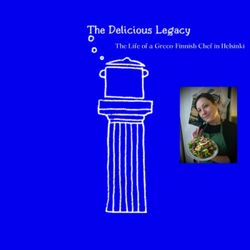
12. The Life of a Greco-Finnish Chef in Helsinki
45:07||Season 7, Ep. 12Hello!New episode of the podcast is out. This is part of a little bonus season I'll be occasionally releasing; in between the regular episodes of the podcast!Here we will be talking with Greek chefs abroad,-that's outside Greece- who cook, work and live in different places, and promote the Greek cuisine in their own way.What are their dreams? How's Greek food perceived outside Greece in their perspective countries, and do they feel as ambassadors for Greece and her gastronomy?What are the most embarrassing aspects of Greek food abroad? And how is the national cuisine in the places that they live? Who does what best?Today for the first episode of this series I' m chatting to chef Aino Mavrogiannaki; a Greek-Finnish chef who lives and works in Helsinki, but who's is from Crete as well, and grew in New York too!Let's find out!Love,Thom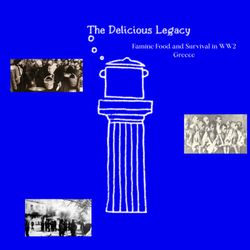
11. The Great Greek Famine of World War Two
24:52||Season 7, Ep. 11Hello my curious archaeogastronomers!This week's subject is a little bit darker than normal.My reason for doing an episode is that this time of the year, specifically near 28th of October, is that is when traditionally in Greece the commemoration and celebration of liberation from Nazis occupation is celebrated. I wanted to examine the role of the famine in the modern Greek psyche a little.World War 2 was brutal for the Greek people; Greece as country suffered under the triple occupation of Nazi Germany, Fascist Italy and Bulgaria.Roughly 10% of the pre war population perished. A civil war that lasted 4 years ensued after liberation in 1944. Greece lay in ruins. Whoever could, in the 50's immigrated in USA, Australia and Germany to find a better luck.The after effects of the devastation and the great famine of WW2 were felt till recently. The grandmas talk about it, it has passed in the language and in the way people saw food in the subsequent decades.Listen to BBC's Witness History short episode:https://www.bbc.co.uk/sounds/play/w3ct3c59Recommended reading:Famine and death in occupied Greece, 1941-1944: By Violetta Hionidou · 2006The German Occupation Recipes:https://metabook.gr/books/oi-sintaghes-tis-katokhis-natalia-samara-gkaitlikh-20132Much Love,Thom & The Delicious Legacy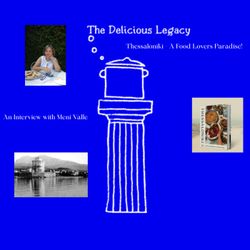
10. Thessaloniki - A Food Lovers Paradise!
49:01||Season 7, Ep. 10Hello!New episode is out for your delectable delight!Thessaloniki is located in Northern Greece in the region of Macedonia, and has a long, long history, being established in 315 BCE by king Cassander to honour his wife, the half-sister of Alexander the Great, Thessalonike. Today is the second largest and most important city in Greece.As a major port, with access to the Mediterranean, and half way to Constantinople it thrived for centuries, being an important hub for trade and culture from all over the Balkan peninsula, and beyond.It was also home to a thriving Jewish community for roughly 500 years; the Sephardic Jews.In the beginning of the 20th century they accounted for more than half of the total population of the city.As a result, Thessalonica’s food culture is a heady mix of influences from all across Greece, Balkans, and Turkey with amazing food, and rightly is considered by many the food capital of Greece.On today's episode, I have the honour to have as my guest Meni Valle, Greek-Australian cook and author, all about the best gastronomic destination in Greece, the city of Thessaloniki!!!In Valle’s new book, Thessaloniki: And the Many Kitchens of Northern Greece, published by Hardie Grant, she turns her focus to the diverse and historically rich cuisine of Greece’s second-largest city.Well, enjoy our discussion!https://www.menivalle.com.au/Her new book Thessaloniki is released soon in UK.https://www.amazon.co.uk/Thessaloniki-Many-Kitchens-Northern-Greece/dp/1761450980My food cultural / historical recommendations for the week include:Dr Roderick Bailey: The British Experience of the Great Fire of Thessaloniki of 1917https://www.youtube.com/watch?v=HUMh1RoqKiwCulina vetusFreezing and Salting Pork:https://www.culina-vetus.de/2025/09/30/freezing-and-salting-pork/PopChop - Future Food Culturehttps://popchop.at/Building Blocks: Greek Whole Grain Tahini, and the Artisans Behind Ithttps://culinarybackstreets.com/stories/athens/building-blocks-37Music on this episode -as ever- by Pavlos KapralosEnjoy!Love,Thom & The Delicious Legacy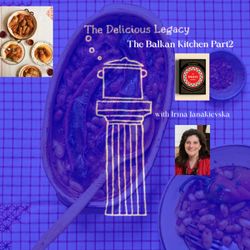
9. The Balkan Kitchen- Part Two
01:01:57||Season 7, Ep. 9Hello, and welcome to part two of my discussion about Balkan Food with the incredible Irina Janakievska!On this second part of our discussion -we pick up from where we left- we talk about the top five must try dishes of the region, that anyone who loves food should try. Foods from the heart of the Balkans.Such as cevapi, ajvar, dolma/ sarma, bourek, and tres leches revani! Yes....Lets find out why....I'm interviewing the award winning (James Beard awards on the International Category) and writer and recipe developer Irina Janakievska, author of the book "The Balkan Kitchen, Recipes and Stories from the Heart of the Balkans". She has also won the British Library Food Season Narrative Cookery Book Award (2025) and a Special Award at the Gourmand World Cookbook Awards (2024).The book was shortlisted for the Jane Grigson Trust Award (2023) and the Fortnum & Mason Debut Cookery Book Award (2025). She has featured on BBC Woman's Hour, BBC Radio London and Times Radio discussing Balkan cuisine. She lives in south London with her husband and young son, cooking, researching and writing about Balkan history, food culture and culinary traditions, and where I went to chat about all things Balkan. plus tasting some delicious traditional home made specialities!Photo Credit is The Balkan Kitchen (Quadrille, 2024), Copyright for photos Liz Seabrook.Enjoy!Thom & The Delicious Legacy